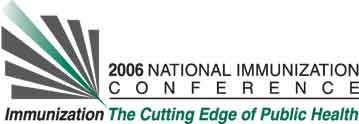Lindsay B. Newcomb, CDC National Immunization Program/Health Services Research and Evaluation Branch, Association of Schools of Public Health, 1600 Clifton Rd., NE, Mailstop E-52, Atlanta, GA, USA, Holly Groom, NIP/ISD, CDC, Atlanta, GA, USA, and Maureen Kolasa, NIP/ISD/HSREB, CDC, 1600 Clifton Road, NE, MS-E52, Atlanta, GA, USA.
Learning Objectives for this Presentation:
By the end of the presentation, participants will be able to discuss racial/ethnic differences in parental immunization behaviors.
Background:
Racial/ethnic disparities in childhood immunization coverage may be influenced by differing parental immunization behaviors. Determining which behaviors differ can be beneficial to eliminating these disparities.
Objectives:
Examine differences in parental immunization behaviors by race and ethnicity.
Methods:
Data collected from the National Immunization Encounter Surveys were used for this analysis. Survey participants include a nationally-representative random sample of physicians who regularly immunize children < age 2 years, and parents of these children. In 2003 and 2004, surveys were completed by 1697 parents from 187 physician offices. Differences in immunization behaviors were analyzed by racial/ethnic groups (white, black, Hispanic, “other” including Asian/Pacific Islander, American Indian/Eskimo-Aleut, Multi-race) using chi-square and Fisher's exact tests.
Results:
Black children were significantly more likely than white children (p<0.02) to be immunized during an acute illness visit. Among children with at least one prior vaccination, blacks were less likely than all other racial/ethnic groups to have received all immunizations at the recommended age (p<0.01). 18% of parents reported consulting with family or friends for vaccine information, with Hispanic parents doing so significantly more than white or black parents (p<0.002). Of all parents, 7% reported using the internet for vaccine information, with parents from “other” races significantly more likely than other racial/ethnic groups (p<0.003) to use this resource.
Conclusions:
Black children were more frequently immunized during an acute illness visit than white children, indicating that physicians may have taken advantage of these opportunities to immunize children not up-to-date for immunizations. Timely receipt of vaccinations differed by race/ethnicity, with black children more likely to have late or missed vaccinations. Limited internet use for vaccine information suggests that this resource is not currently fully utilized by parents.
See more of Posters
See more of The 40th National Immunization Conference (NIC)

